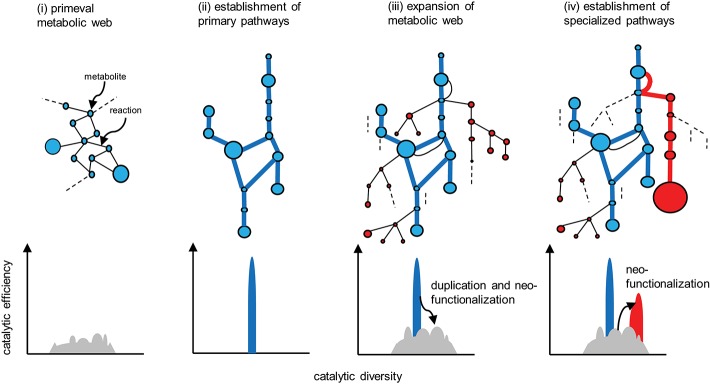Figure 4.
Evolution of metabolic pathways (upper) and the associated changes in the catalytic functionalities of the enzymes (lower). Catalytic efficiency (or the activity of a given reaction) and diversity (or the reaction specificity) are represented on the vertical and horizontal axes, respectively. (i) Primeval metabolism depends on low catalytic activities in terms of reaction specificities and efficiencies. (ii) Improved catalytic specificities and efficiencies allow for the emergence of highly efficient primary metabolic pathways (blue lines). (iii) Expansion of the metabolic web occurs via the duplication of metabolic genes, and the subsequent mutational changes in the genes contribute to neofunctionalization of the encoded enzymatic proteins. (iv) A certain series of enzymes are selected and subjected to catalytic improvement (neofunctionalization). Such processes have enabled the emergence of specialized pathways (red lines) that contribute to the substantial accumulation of the metabolites (red circles). Reactions that do not contribute to metabolic flow (and are therefore hidden) are indicated by dotted lines.

